¶ VOR holding chart
Before holding over a VOR, you must study the approach chart and configure your aircraft.
This approach chart describes the procedure (LFBT approach chart):
- Holding over TBO 113.9MHz VOR which is an IAF (Initial approach fix)
- Inbound leg is radial 078° inbound TBO using a heading 258°
- Outbound leg is at heading 078° after a half turn to the left.
- Outbound leg is 1 minute
- Speed restriction is 220kt
- Minimum holding altitude is 3000ft
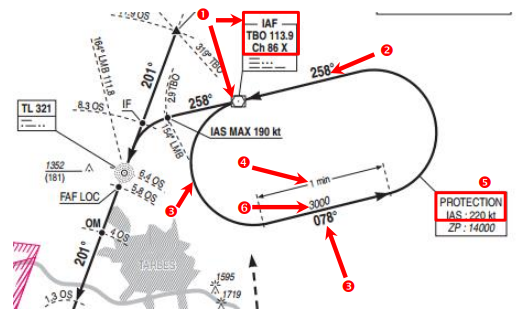
¶ Flying a VOR holding
¶ Before the holding procedure
When you will arrive from an arrival procedure in order to perform a holding pattern, the air traffic controller (ATC) shall give you:
- A procedure to follow until IAF which is a standard arrival procedure
- A Direct to IAF which is an omnidirectional arrival procedure
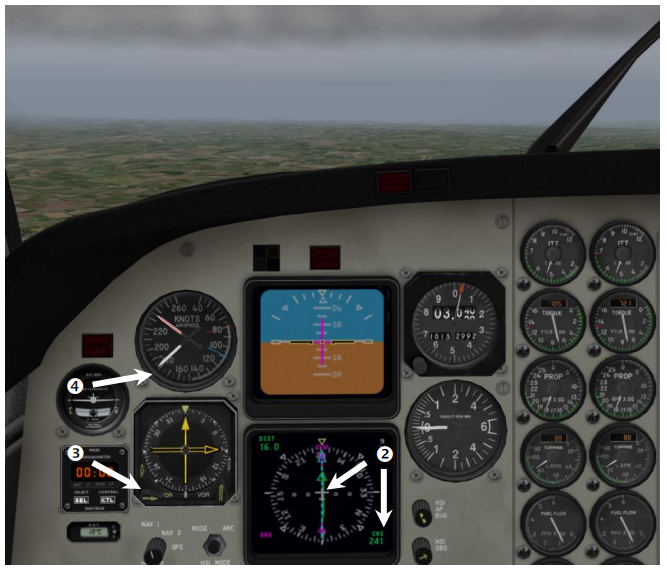
In our example, the controller gives a direct to IAF which is TBO VOR.
- NAV1 is set to 113.9 MHz
- Navigation display is set on current course to VOR (current is 241°)
- Dual RMI channel 1 is tuned for receiving VOR
- Speed shall be reduced below maximum holding speed
¶ Approaching IAF
It is mandatory to join the hold if no approach clearance has been issued by the ATC upon reaching the IAF.
Before reaching the IAF, as the pilot in command, you shall prepare the holding pattern:
- Inbound Radial is 078°. On the instrument set course value 258° which will be the heading to holding VOR.
- Verify that the altitude will be compatible with the minimum holding altitude (3000ft minimum)
- Verify that the speed is compatible with maximum holding speed (maximum 220KT)
- Reset the Chronometer
- Monitor the navigation instrument
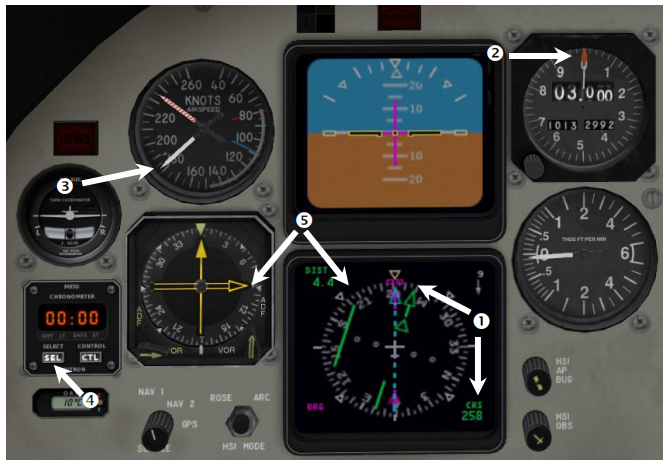
The Air traffic controller may issue holding pattern clearance at this time.
Be careful that the air traffic controller could not give you any holding clearance.
If you do not receive any approach clearance over the initial approach fix, the pilot shall initiate the published holding procedure except when charts prescribe another route to follow.
¶ Over Initial Approach Fix
Above the VOR, you will now start holding the published holding pattern:
- Dual-RMI turns from forward position to backward
- Navigation display RMI does the same
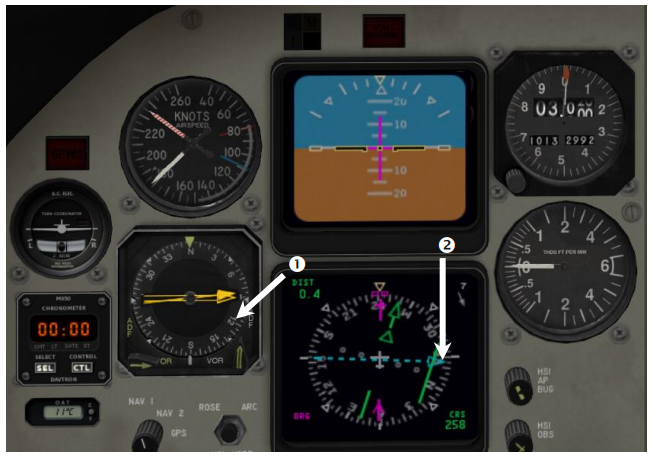
As your heading is 241, perform directly the holding pattern without any specific integration manoeuvre (direct entry).
- Initiate the first 180° turn to the left as requested by the charts
- The final heading shall be 078° for the outbound leg of the holding pattern.
- Monitor your flight instrument all the time (altitude, attitude, speed)
- Monitor the RMI instruments to locate the VOR in order to check the progress status
- When starting the turn the chronometer shall not be started. It must stay at 00:00.
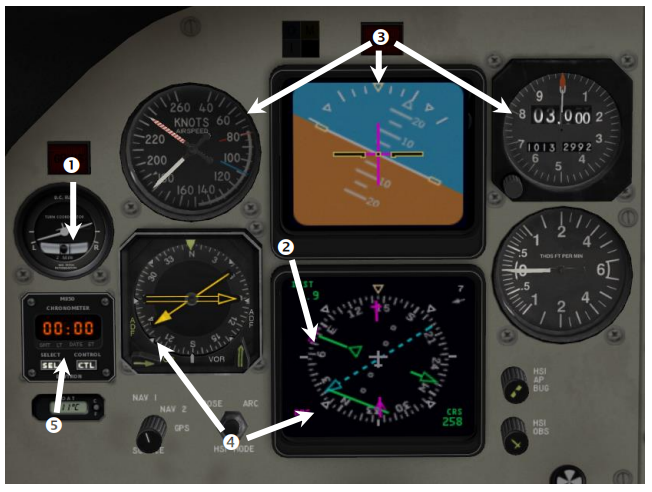
The holding pattern should be done at constant IAS speed.
¶ End of Turn abeam the VOR
When you are abeam the VOR, the holding outbound leg starts when you are abeam the beacon.
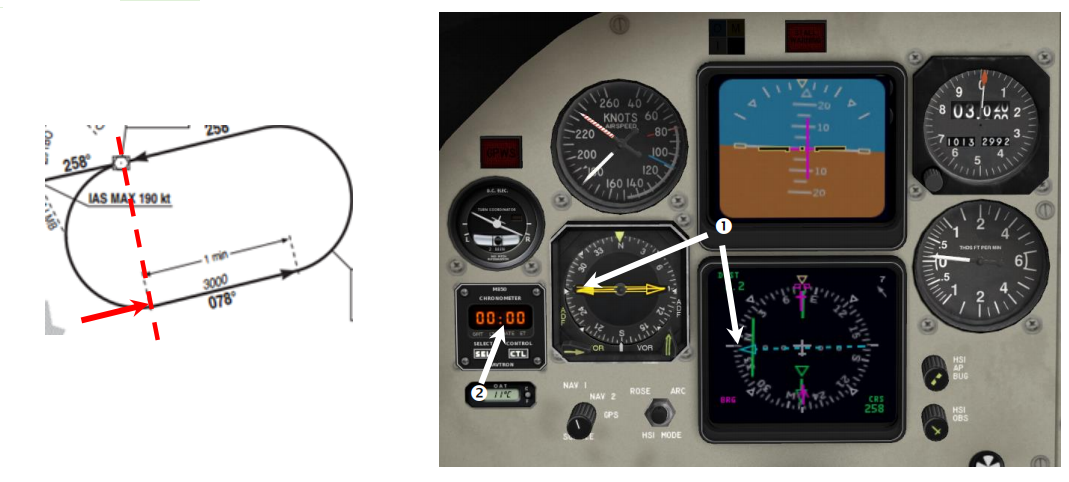
- Check on the RMI instrument the relative position of the VOR (abeam = ±090° relative position)
- When the VOR is abeam, start the chronometer, even if the turn is not completely finished.
If your turn has been finished, and the aircraft is not abeam the VOR, do not start the chronometer before the abeam position.
¶ End of outbound leg
After one minute (the current outbound leg time), the outbound leg is finished. > It is time to turn to the inbound leg
- When the chronometer reaches 1 minute, start the 180° turn to the left to the inbound leg for heading 258°.
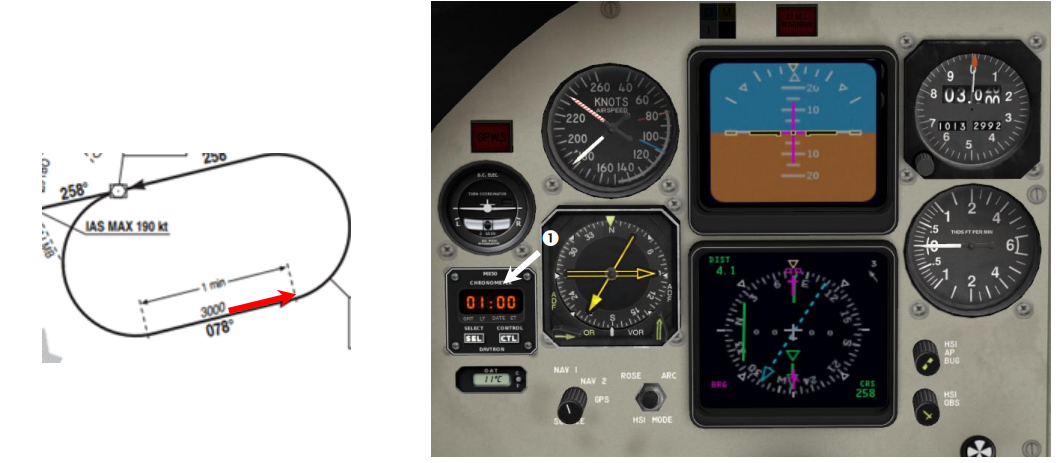
¶ Turn to inbound leg
You are now inside the final turn to the inbound leg.
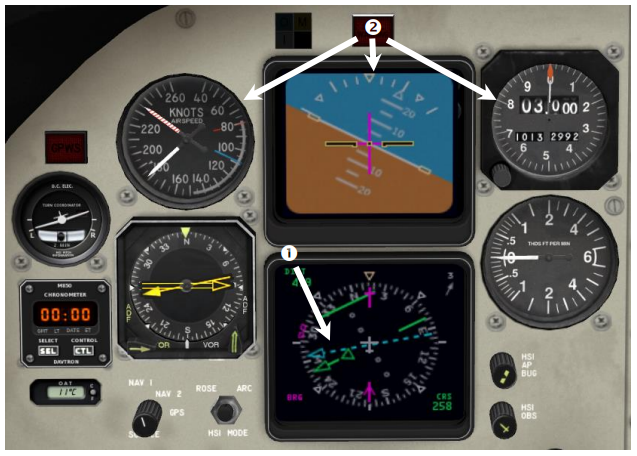
- Monitor the navigation display in order to intercept radial 078° inbound the VOR.
- Monitor your flight instrument all the time (altitude, attitude, speed) during the turn
- The chronometer can be reset if you have time to do it.
¶ Establish on the inbound leg
After the wind compensation manoeuvre to establish the inbound radial, you shall continue to:
- Maintain the inbound radial until VOR beacon
- Monitor the navigation display (progress of flight to VOR beacon)
- Wait for ATC clearance, to decide the next phase of flight, if it has not been received yet
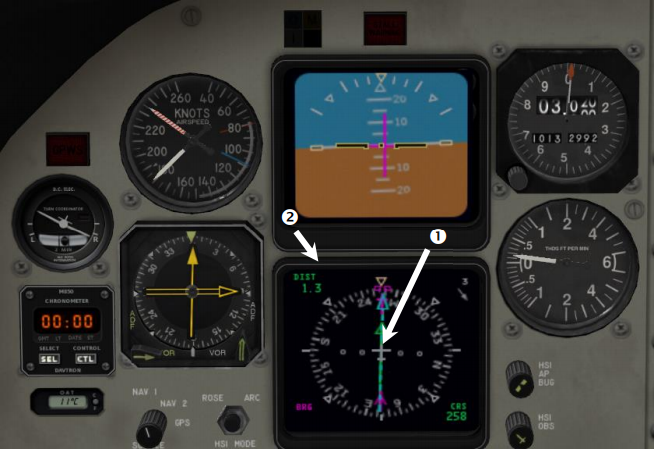
¶ Overshoot or Undershoot: How to fix it?
Due to wind effects, the aircraft will not join the radial direct at the end of the turn:
- First case: after the last 180° turn, you do not intercept the inbound radial: this is undershoot
- Second case: after the last 180° turn, you have crossed the inbound radial and not established it: this is overshoot\
In our example below, after the 180° turn, we face an overshoot. The aircraft has crossed the radial and cannot establish it. As the pilot in command, we shall re-intercept the radial.
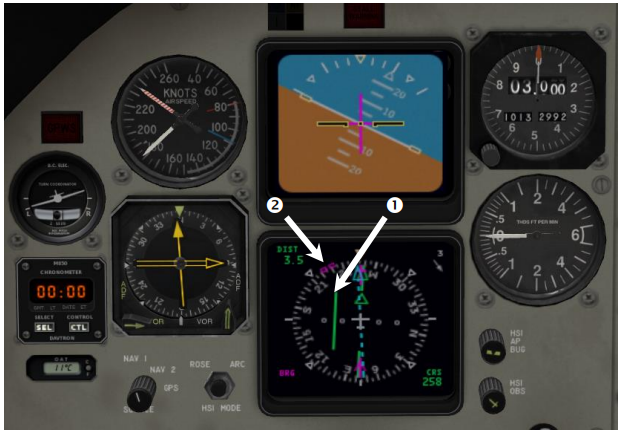
- The navigation display shows that the radial has been crossed and not established.
- When facing an overshoot like in our example, the heading shall be adjusted to re-intercept the radial. We use a standard ±30° heading adjustment in order to do it. (You can use lower values in function of the overshoot estimated distance but they shall be greater than 10°).
When facing an undershoot, the heading should be stopped 30° before the complete 180° in order to make a quickest radial establishment.
¶ Following the holding pattern
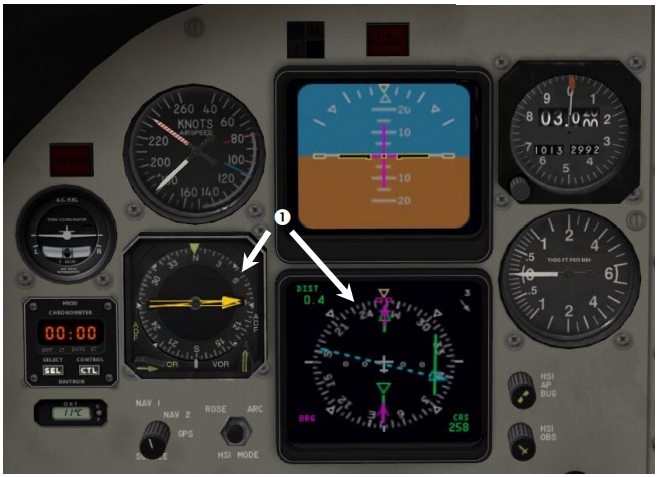
Pay attention that just before reaching the initial approach fix (IAF) again:
- If you have received the approach clearance during the holding procedure, you should leave the holding pattern at the VOR beacon (IAF) (or for some particular cases, leave the pattern at the published point) and proceed with the given approach procedure.
- If you have not received the approach clearance during the holding procedure, you shall stay in the holding pattern and perform another one without any additional instructions (go to chapter 5).
If the air traffic controller gives you the approach clearance too late as the pilot in command, you can ask another holding procedure in order to prepare the aircraft for the approach phase. Do not begin your approach if you estimate that you are not enough prepared for it.
- None
- VID 150259 - Creation
- VID 200696 - Wiki integration
- VID 496402 - Wiki.js integration